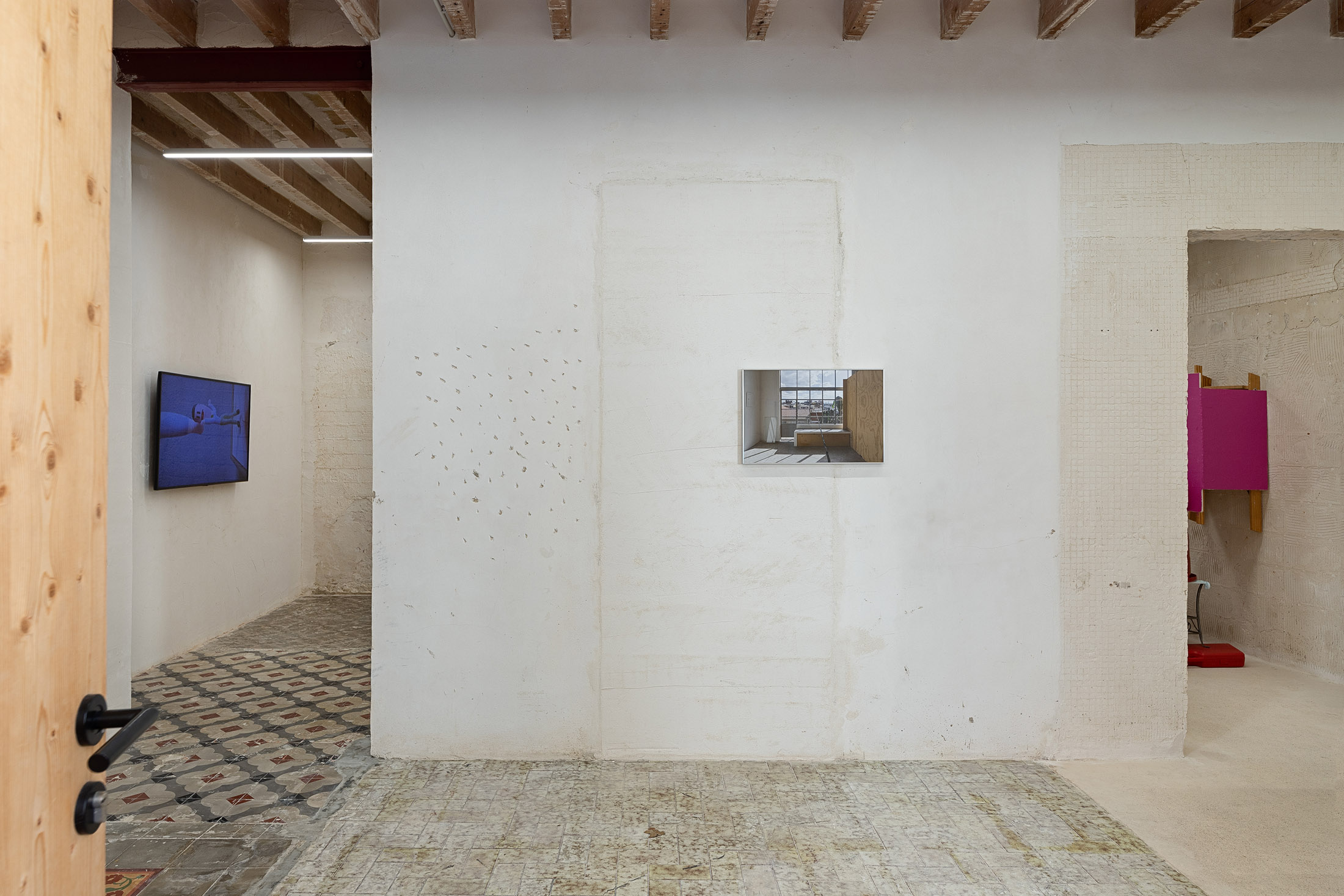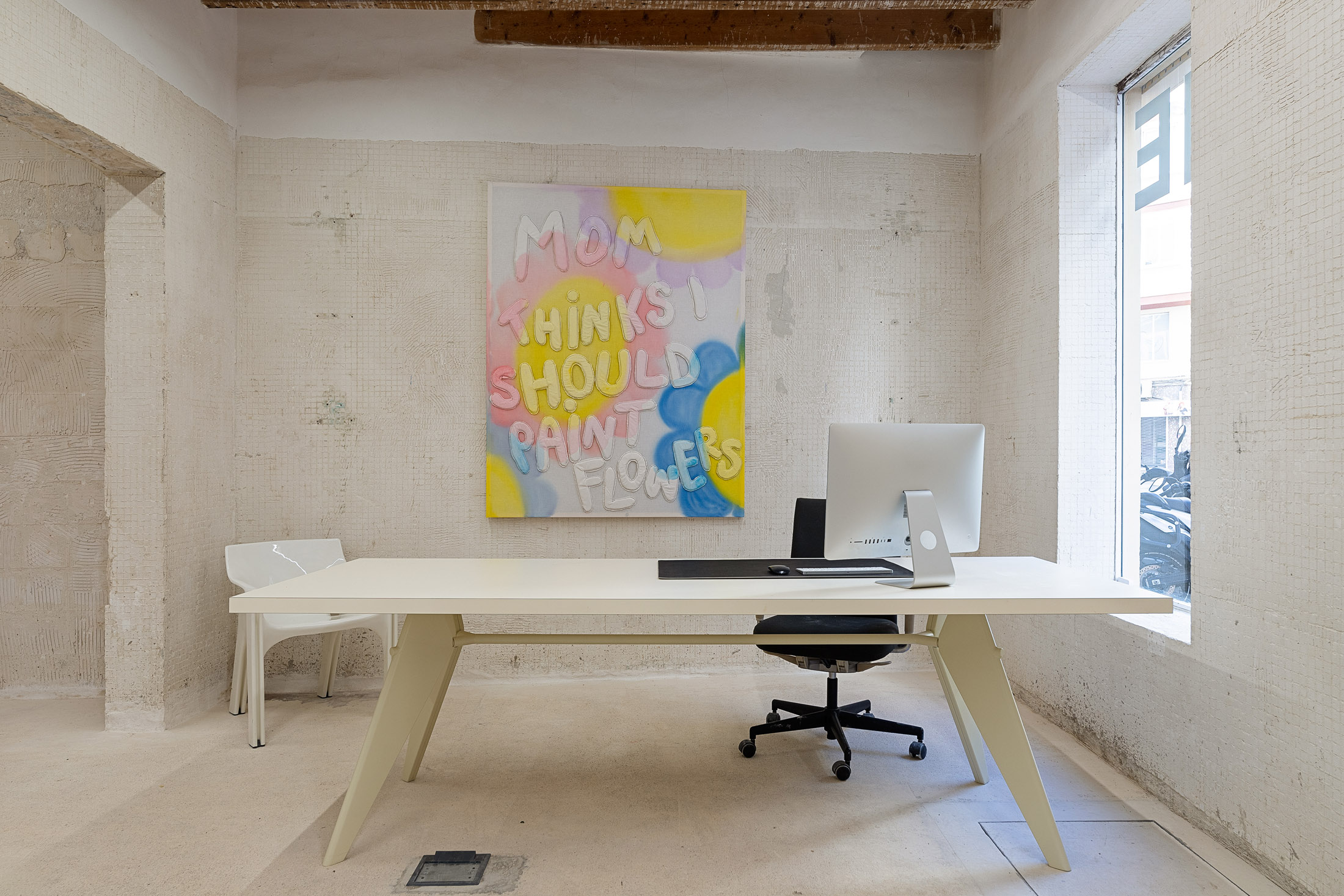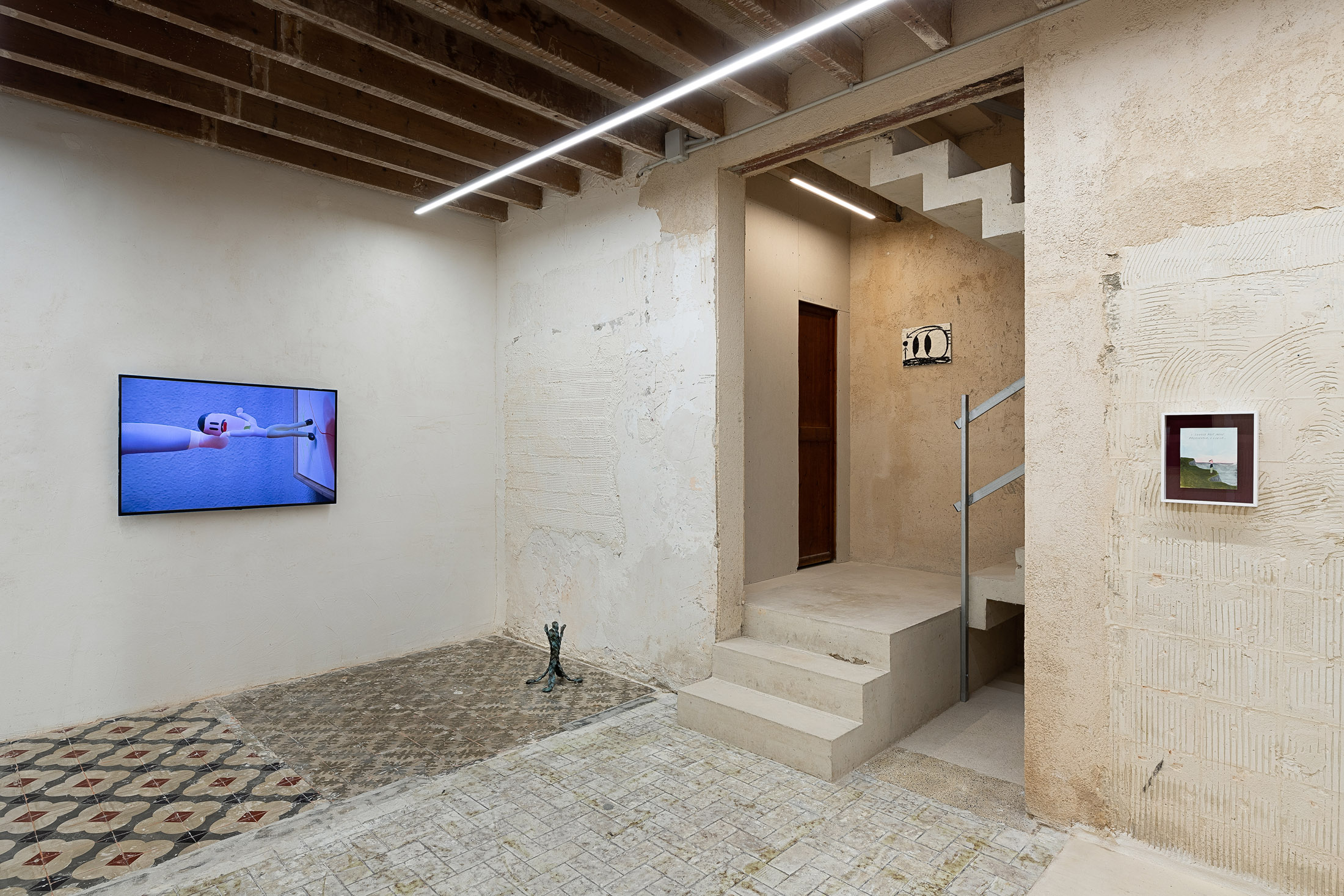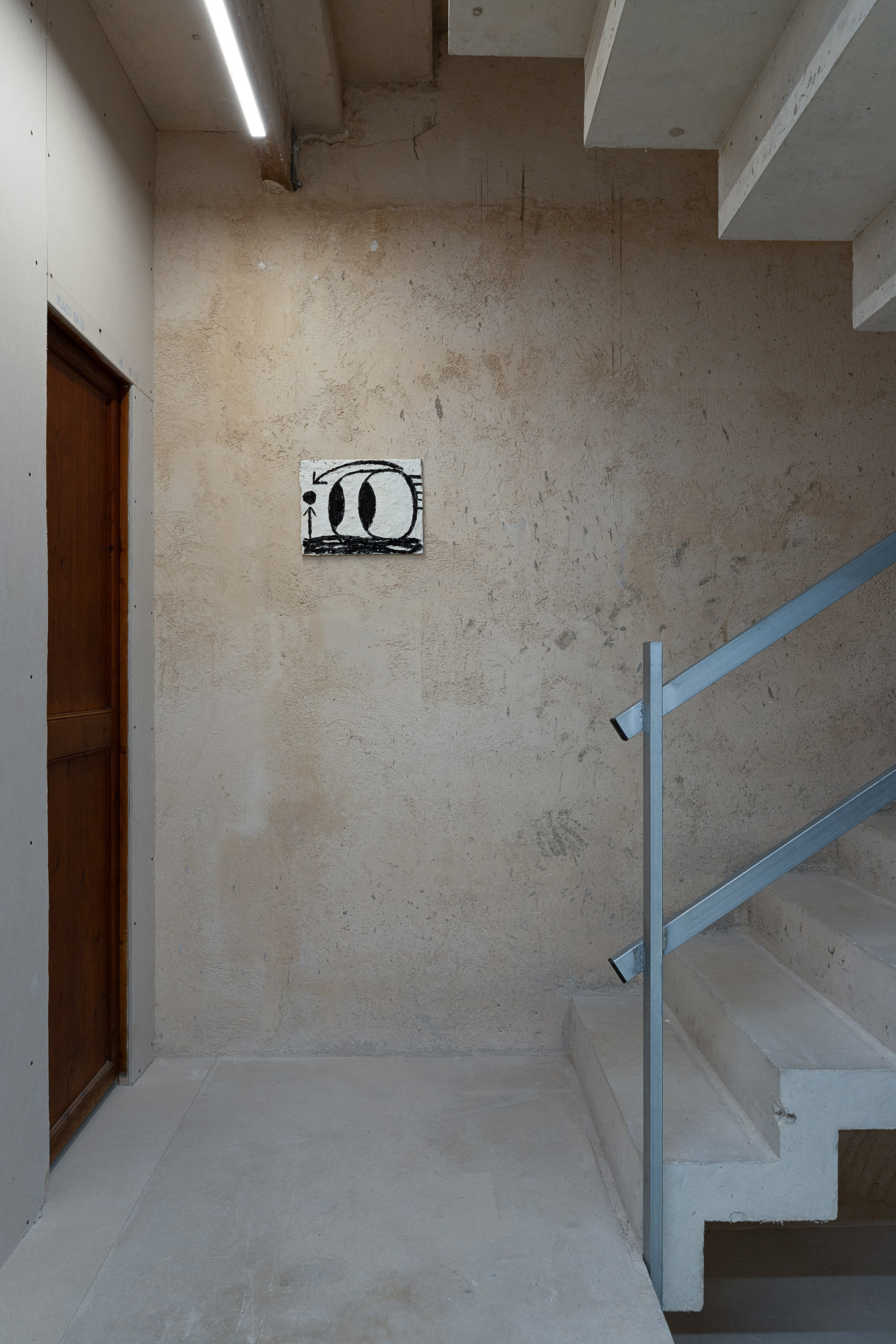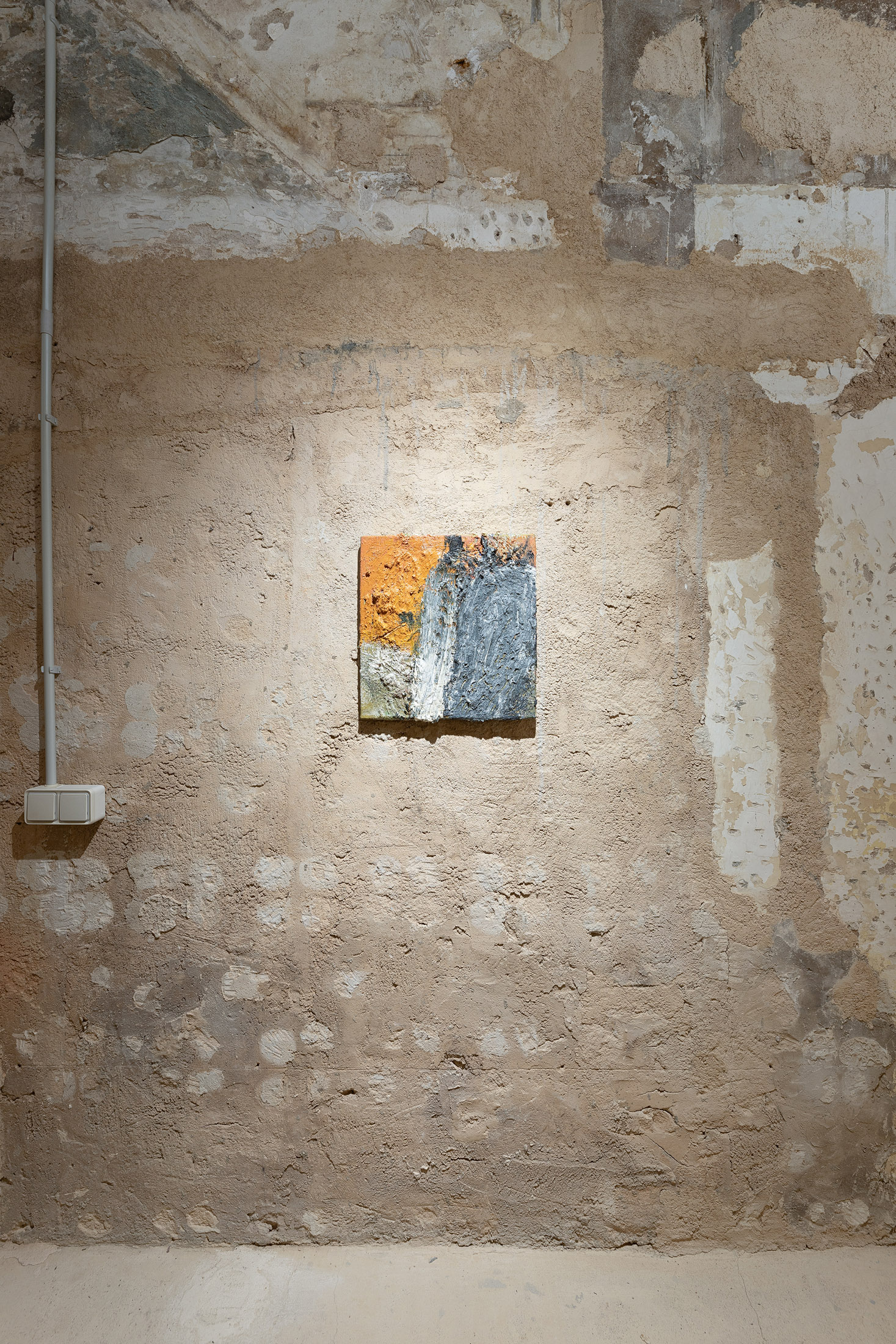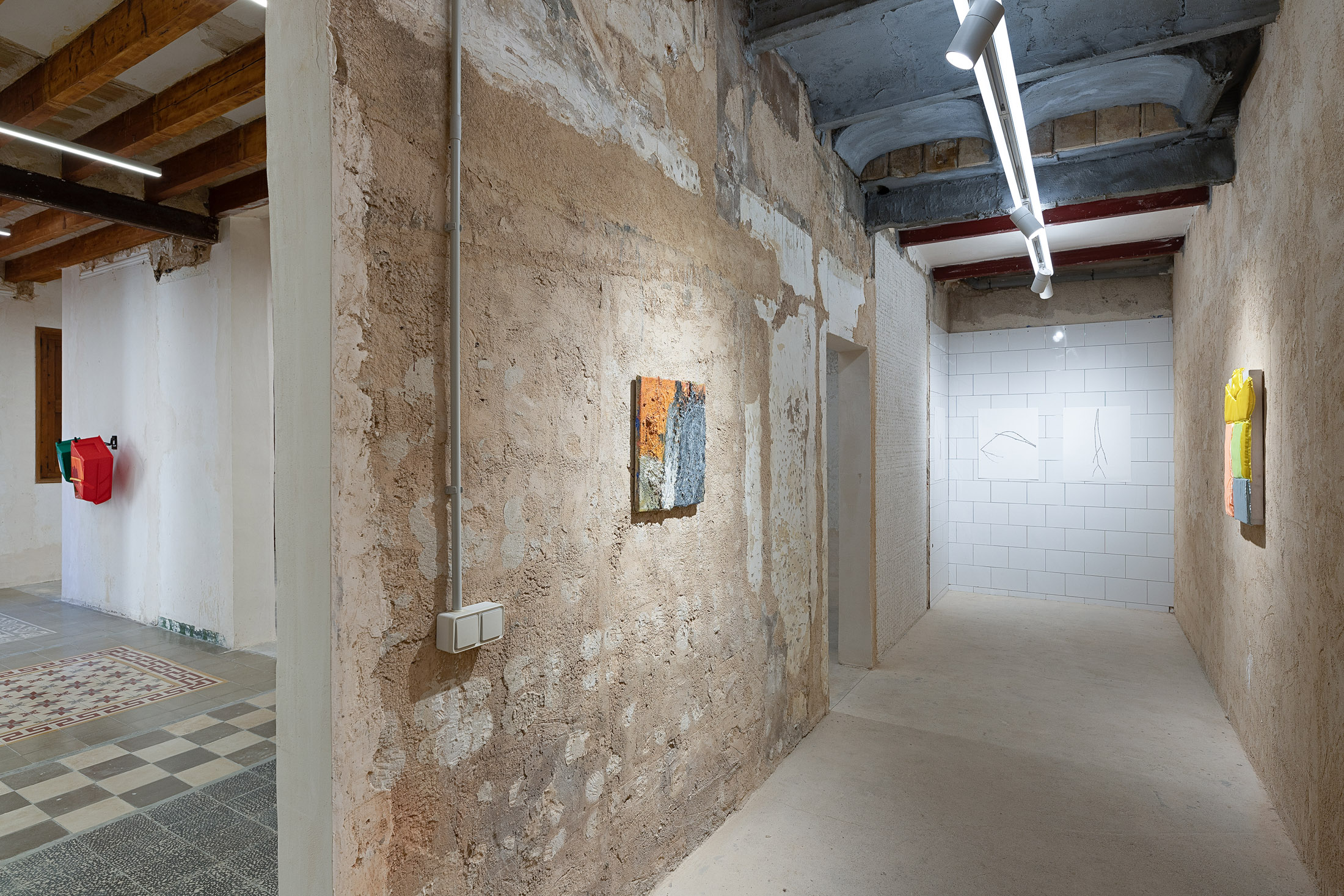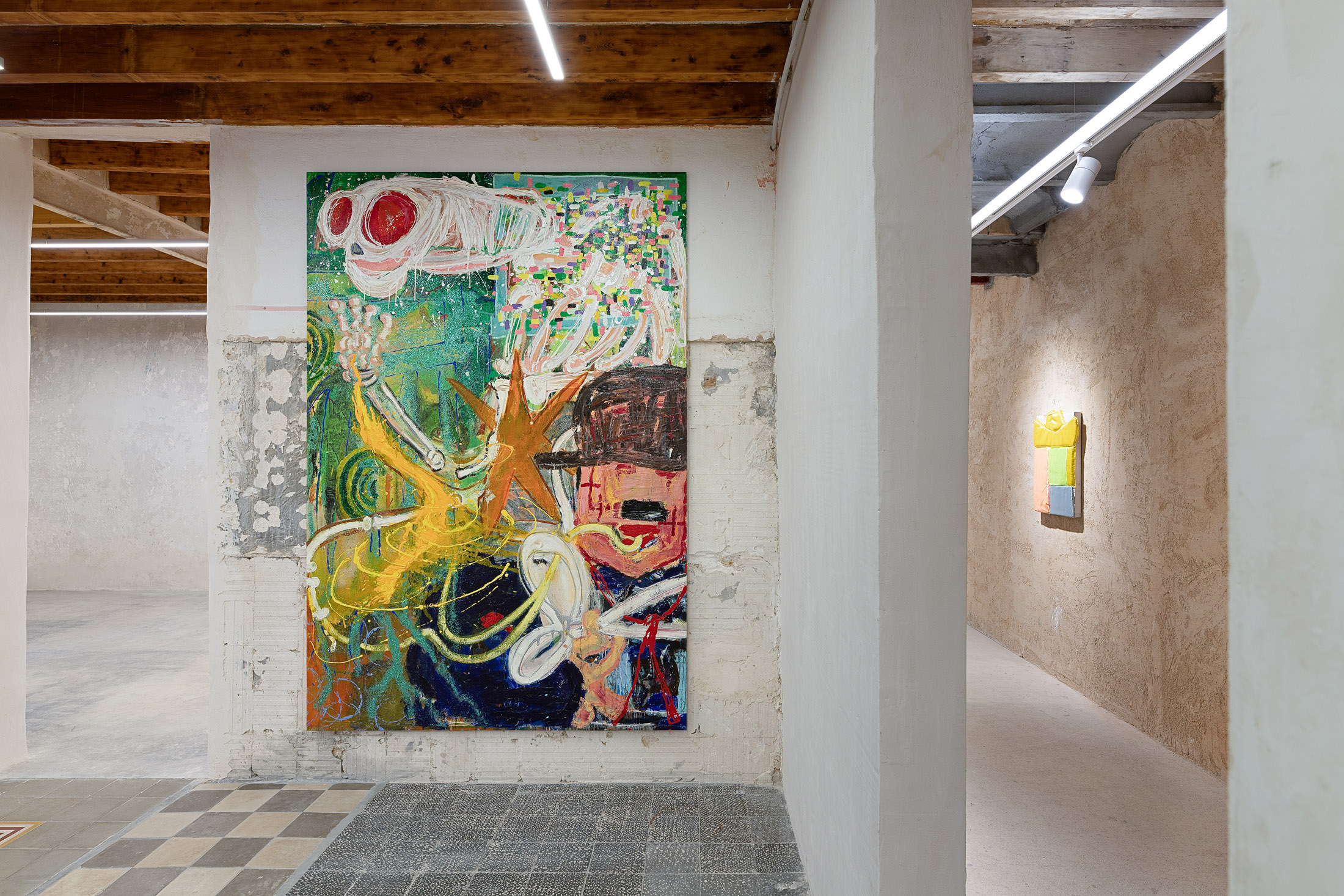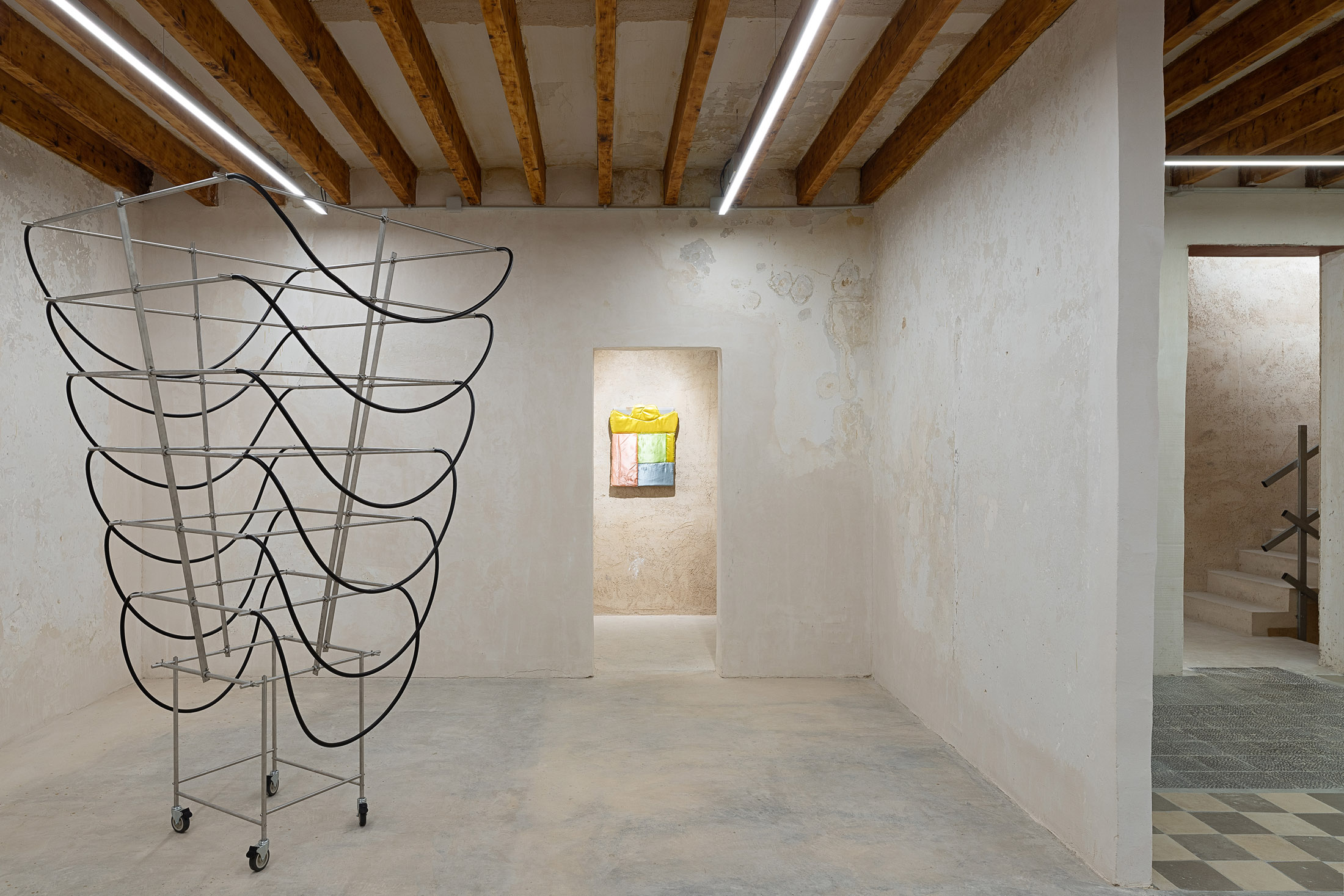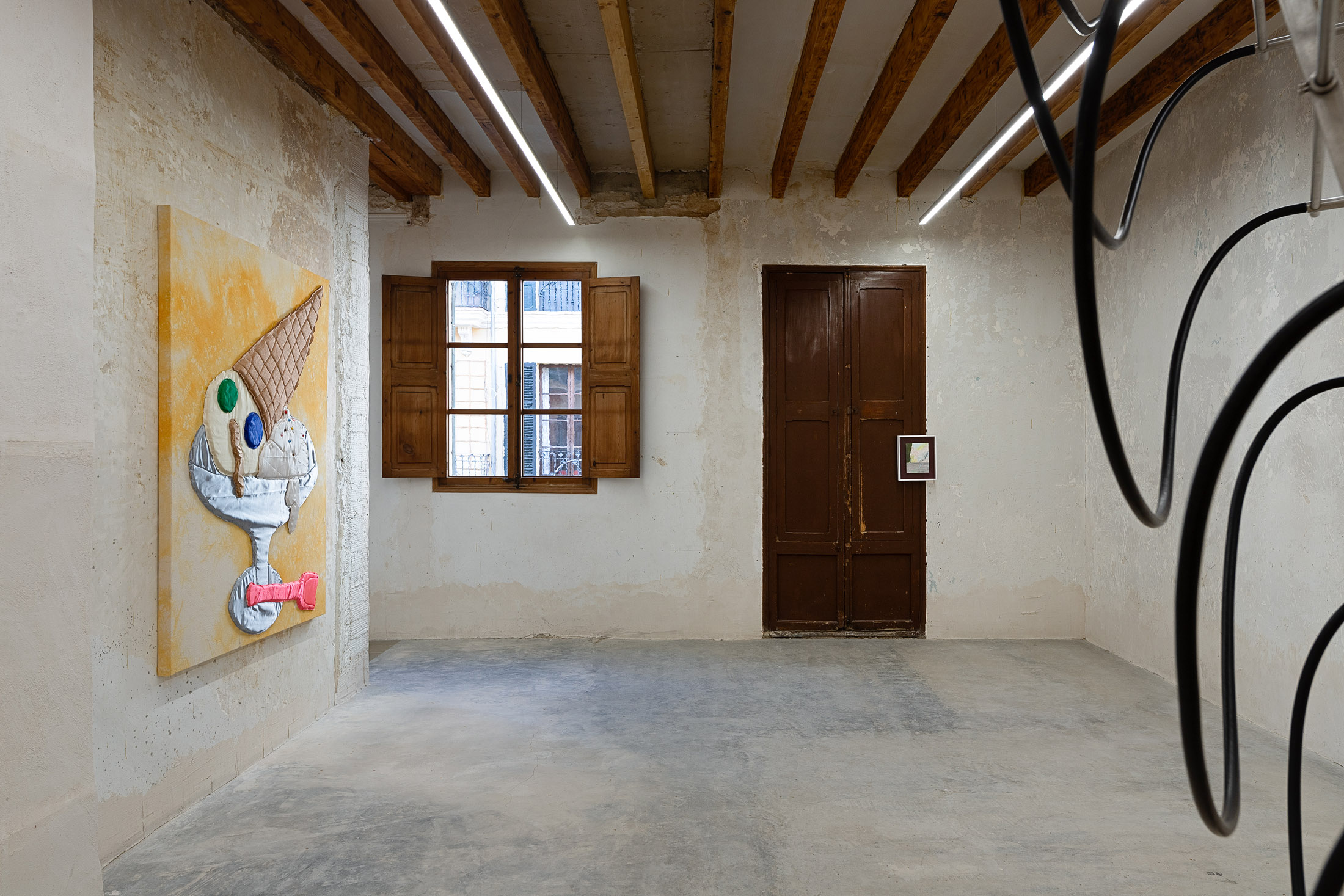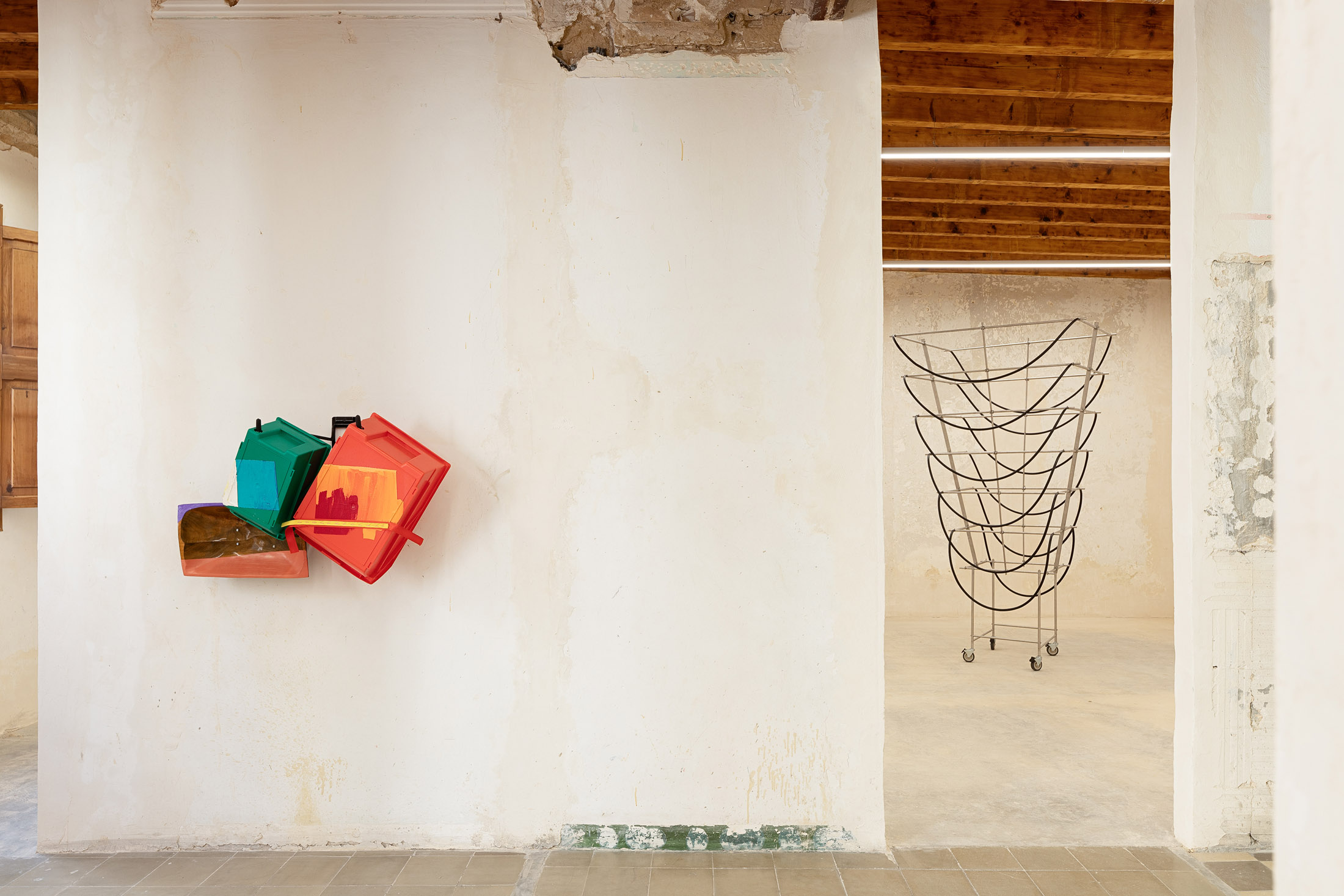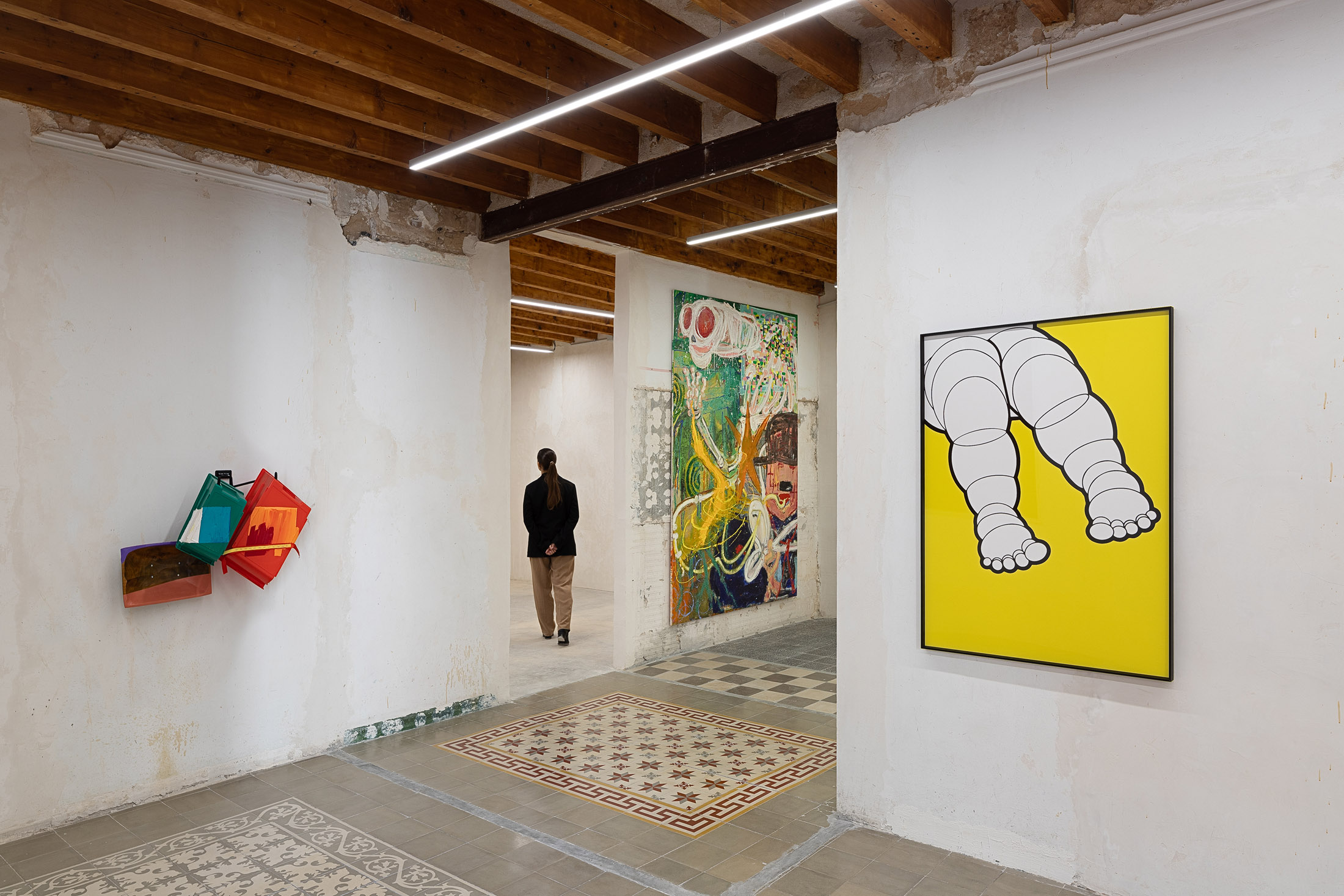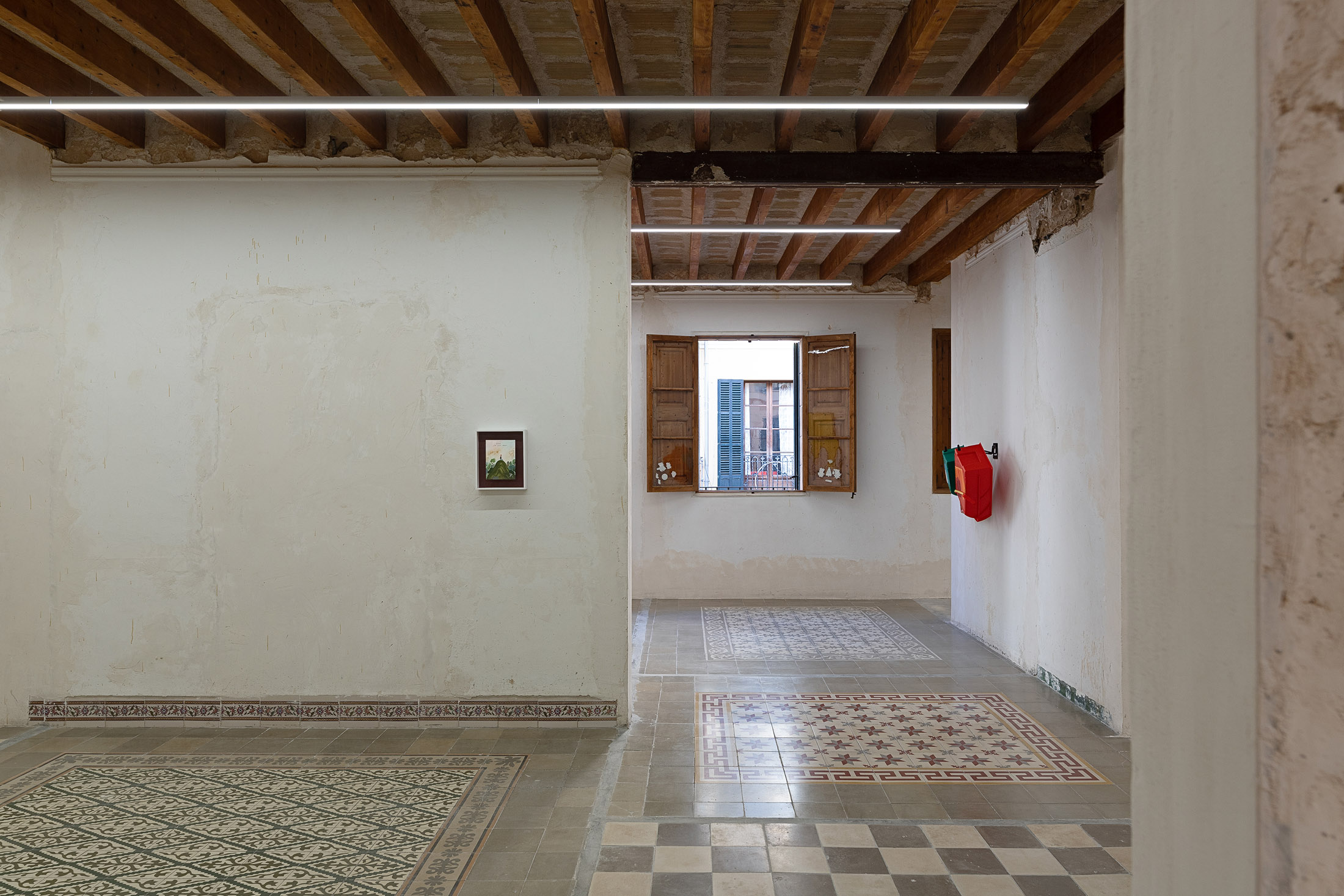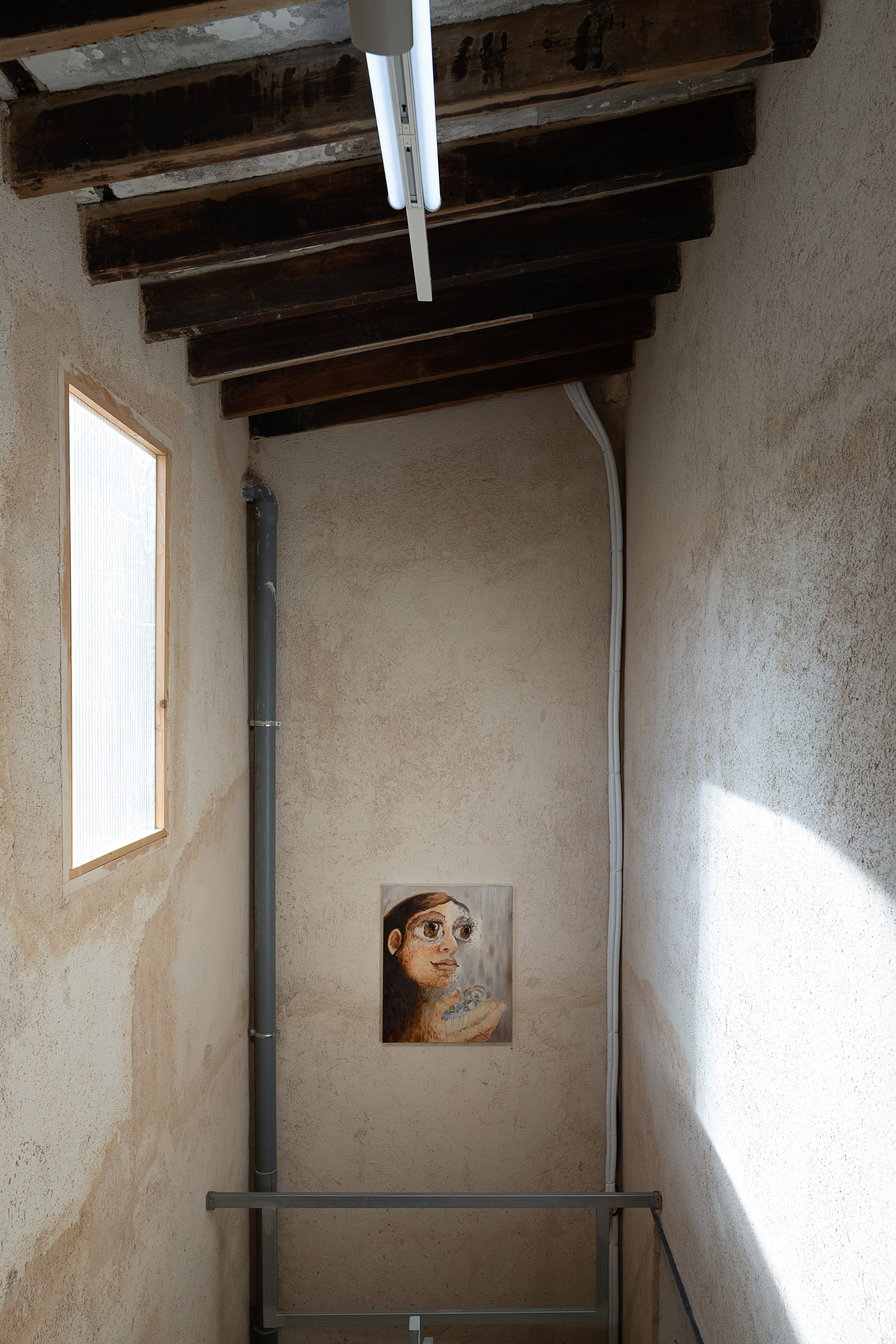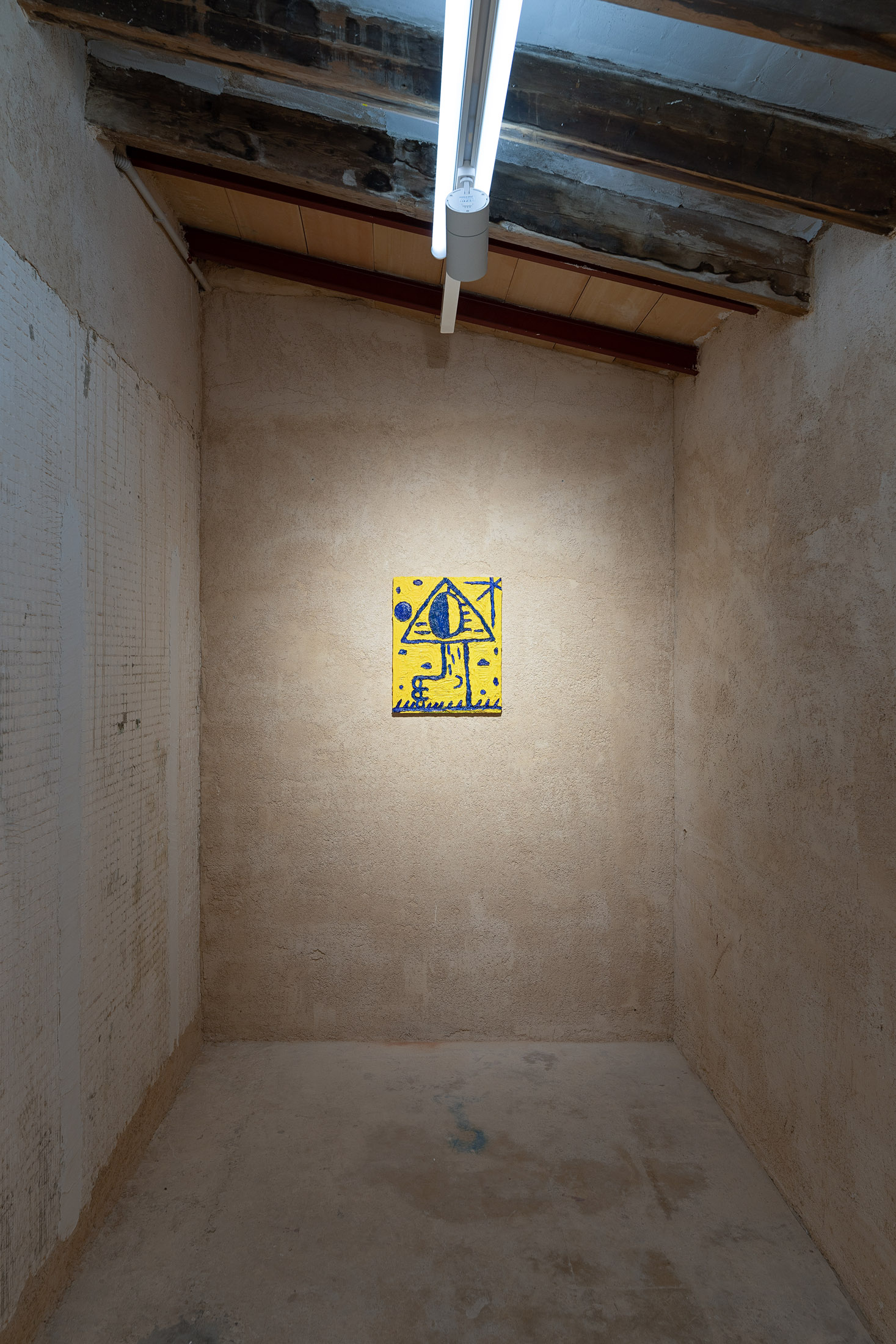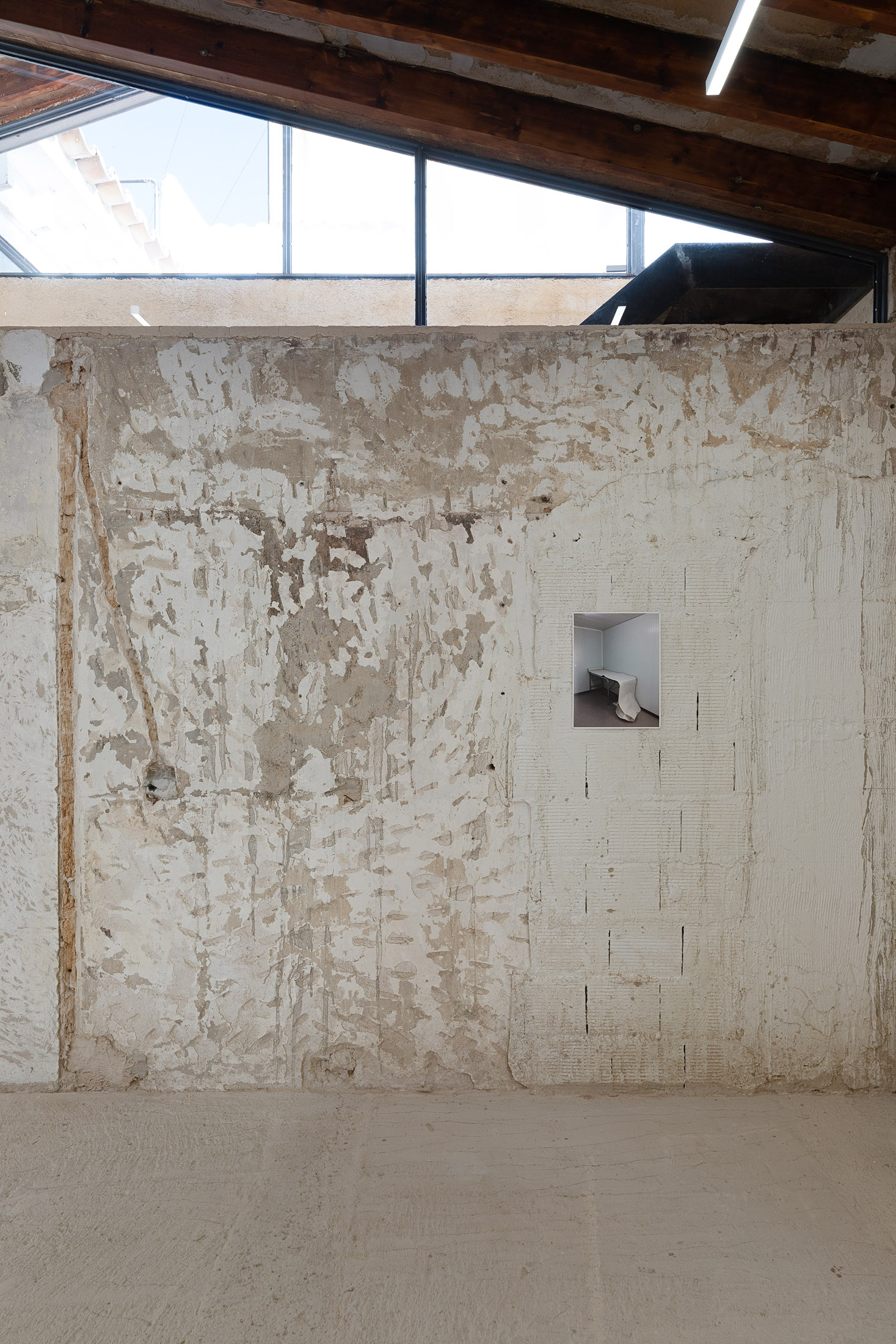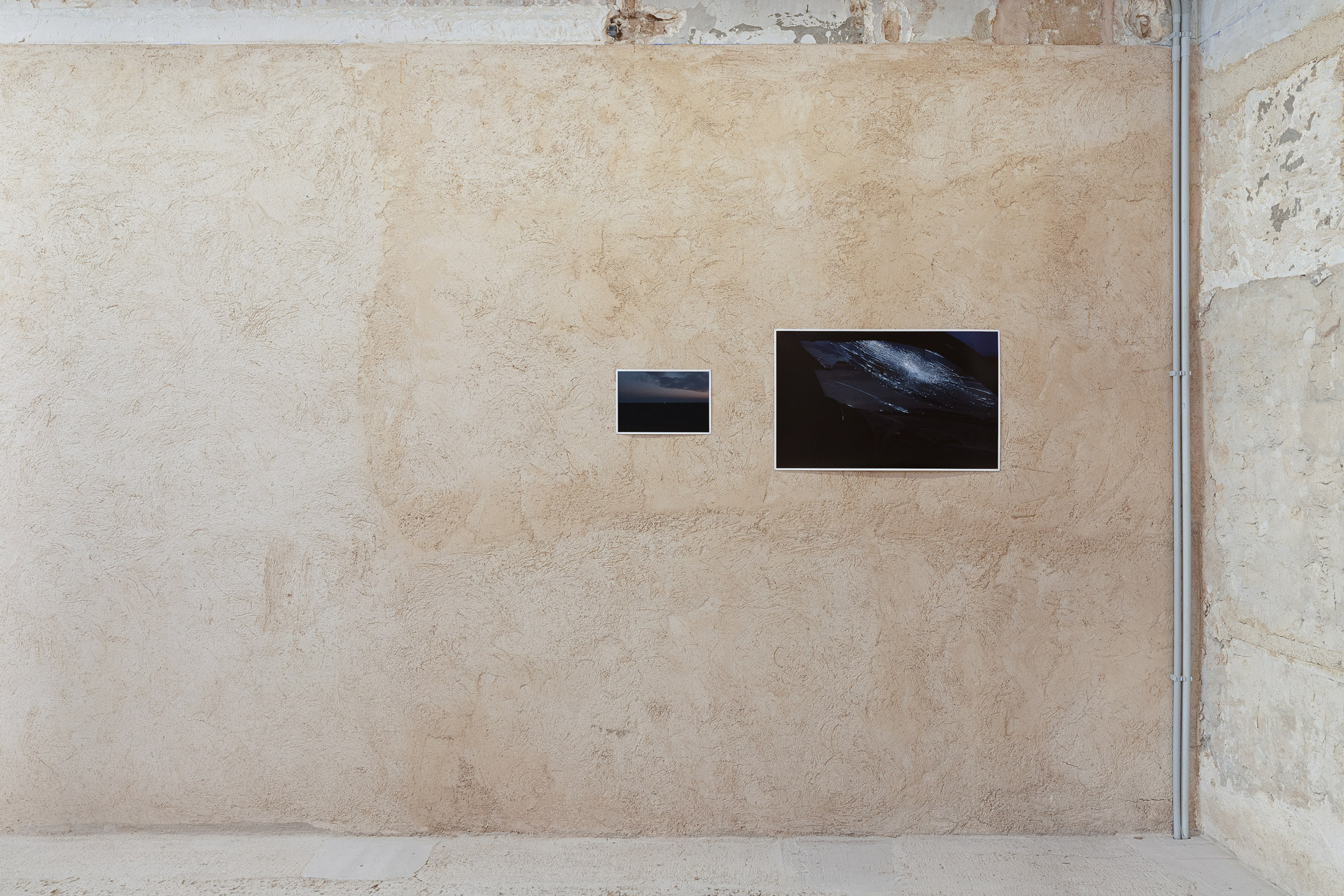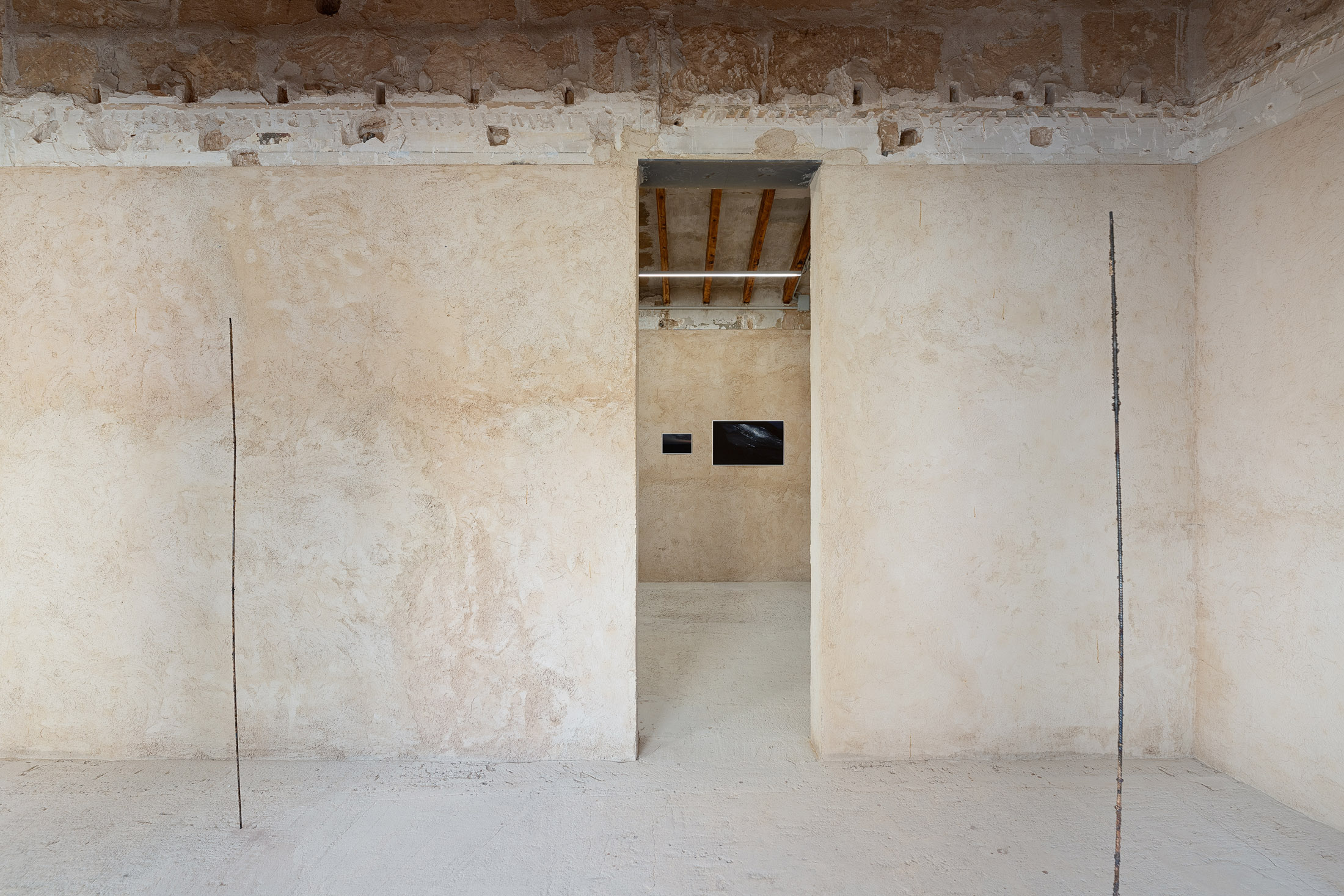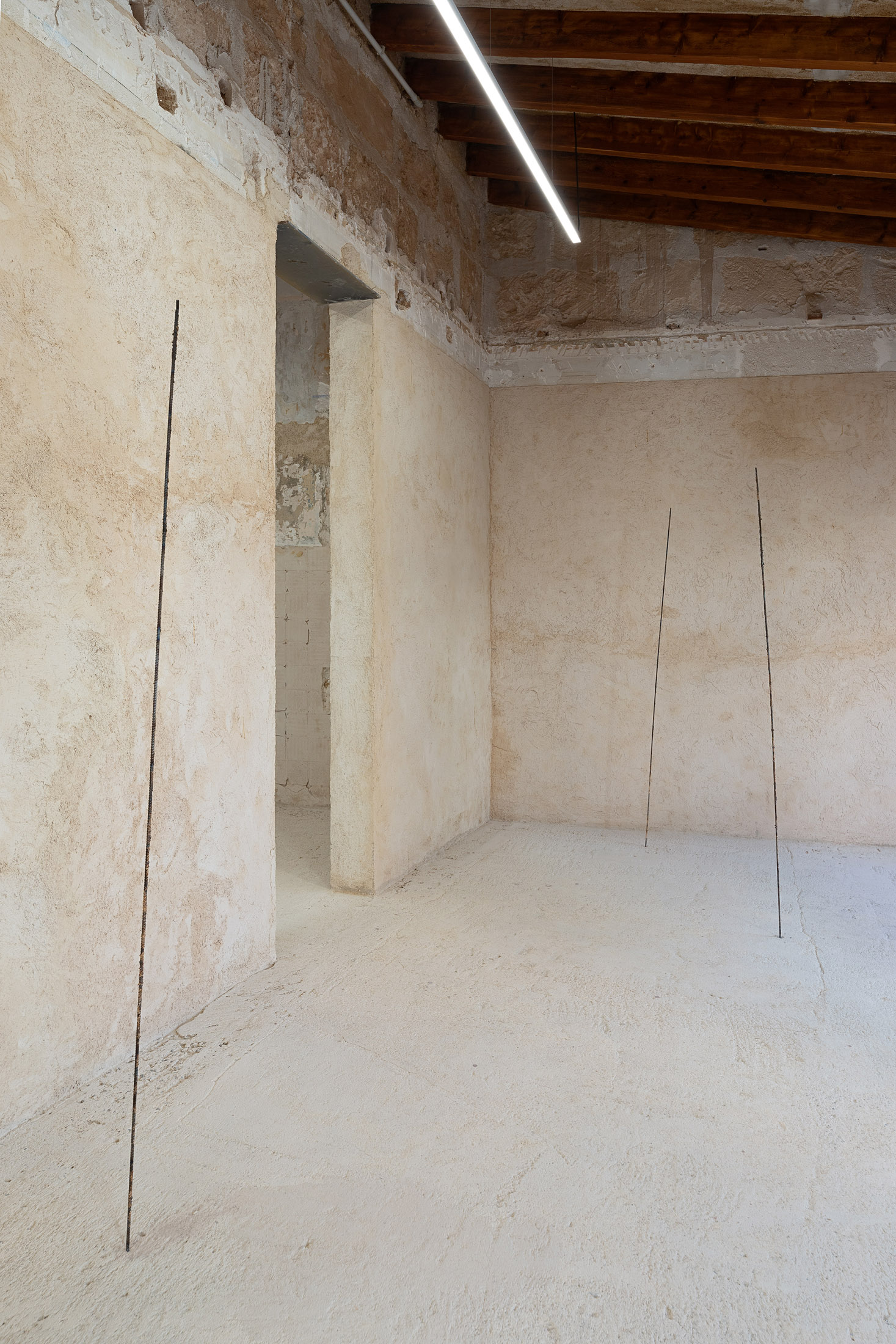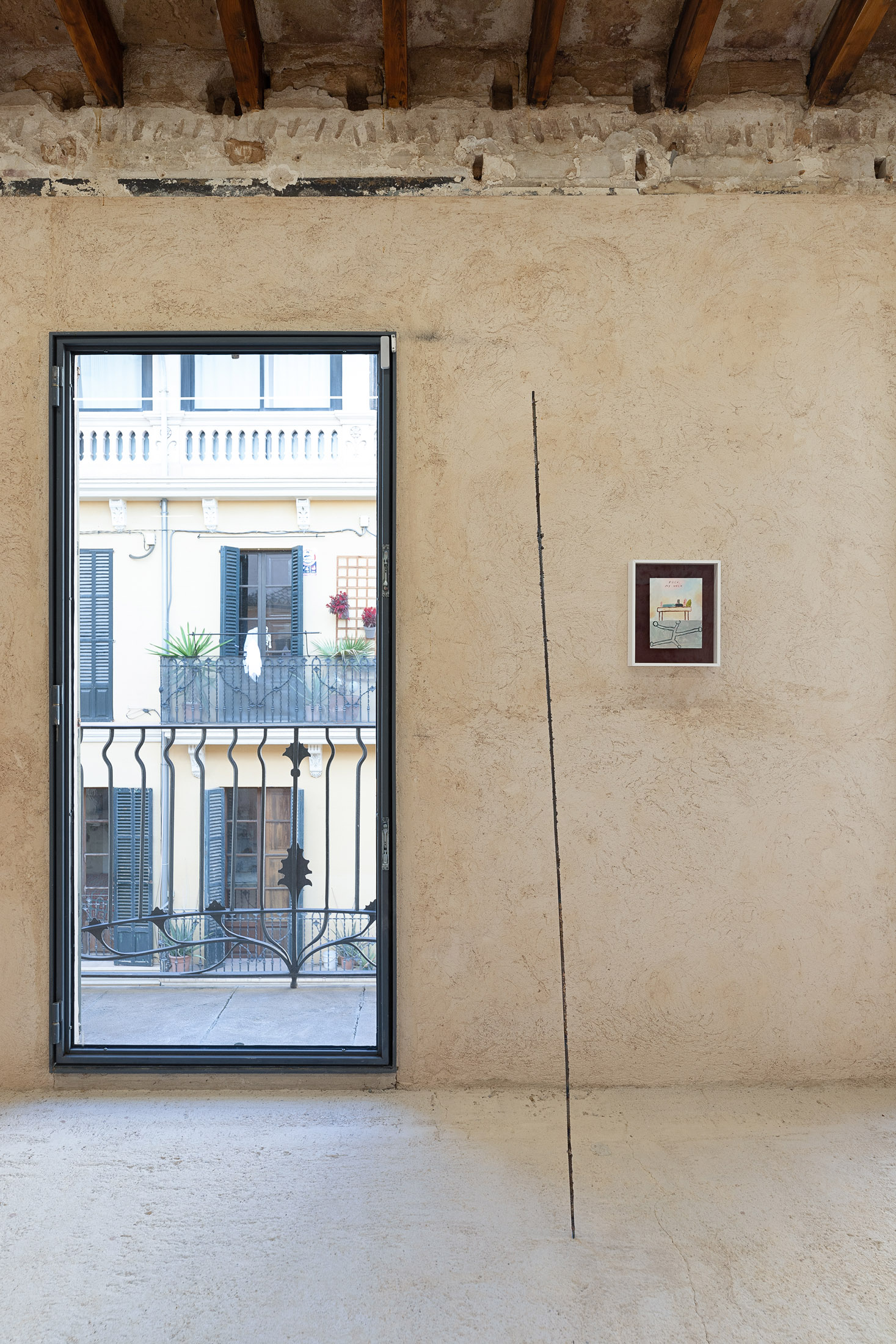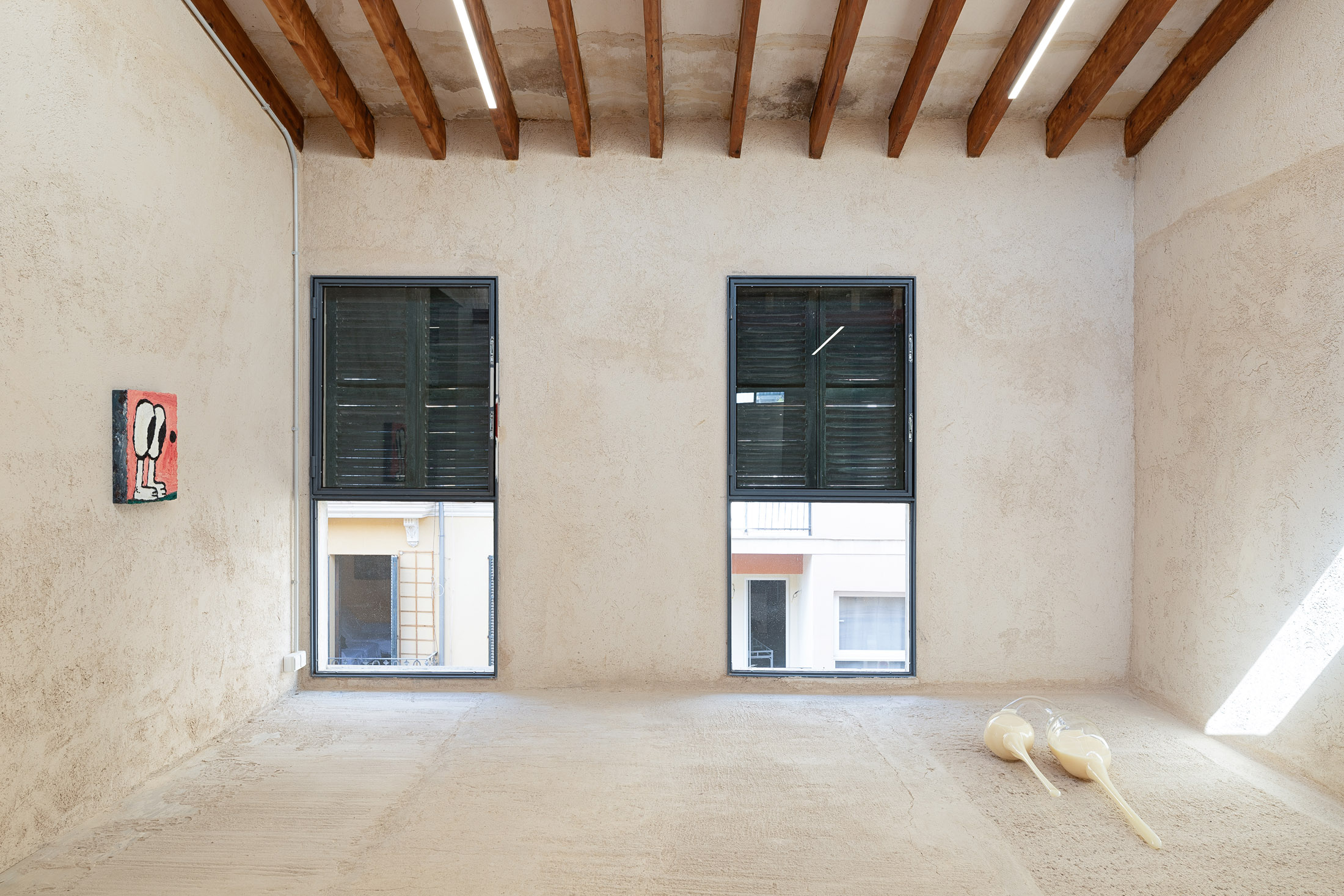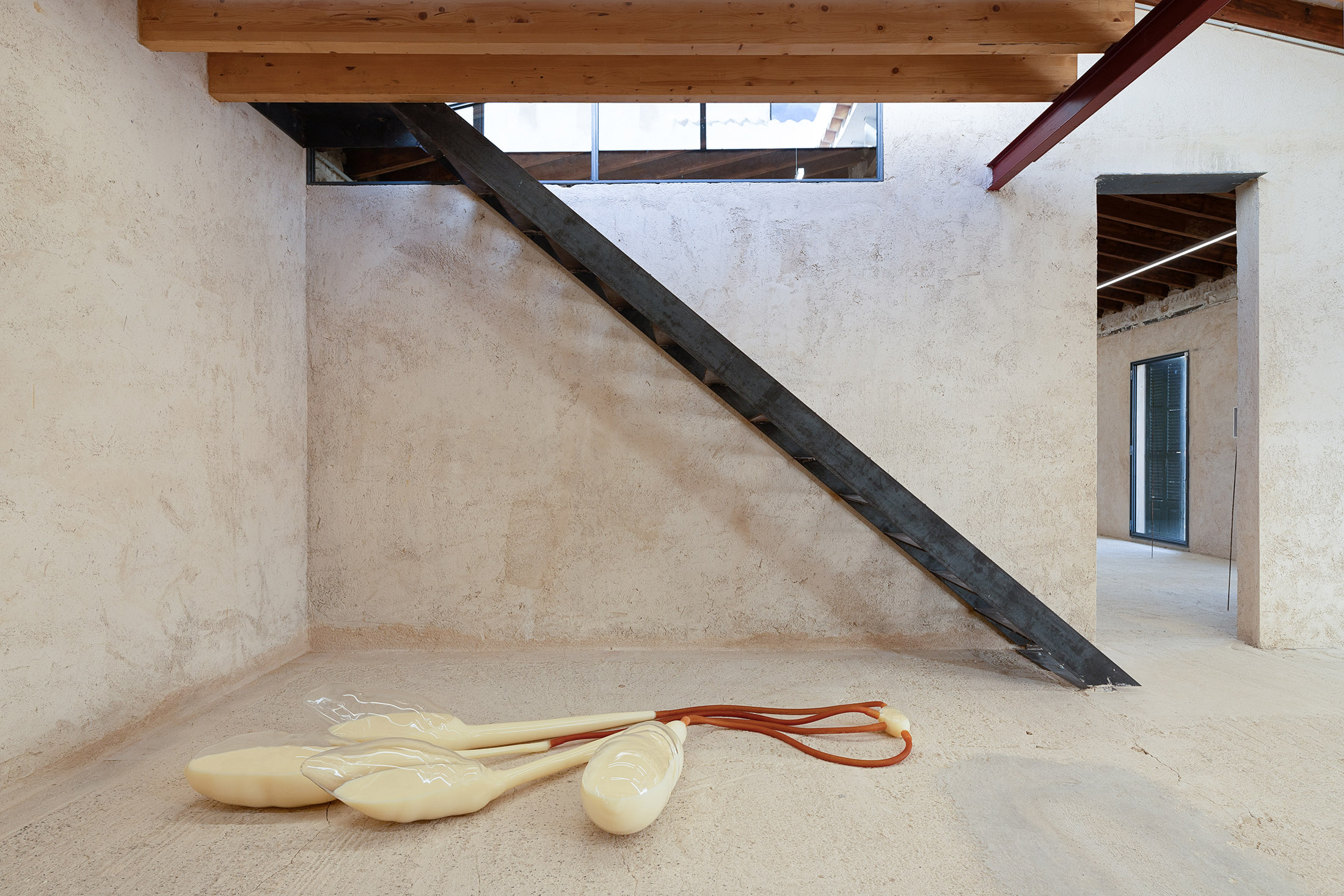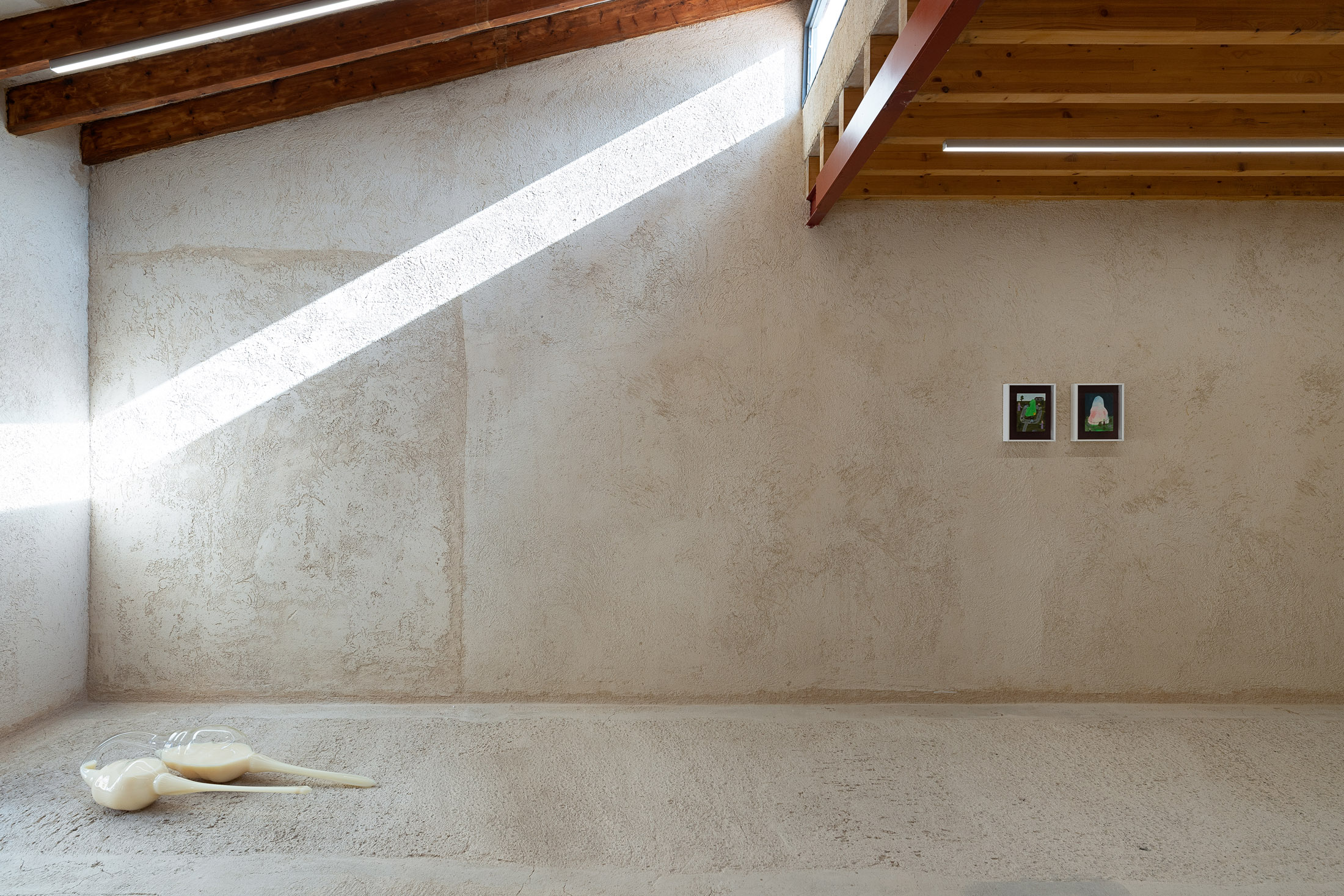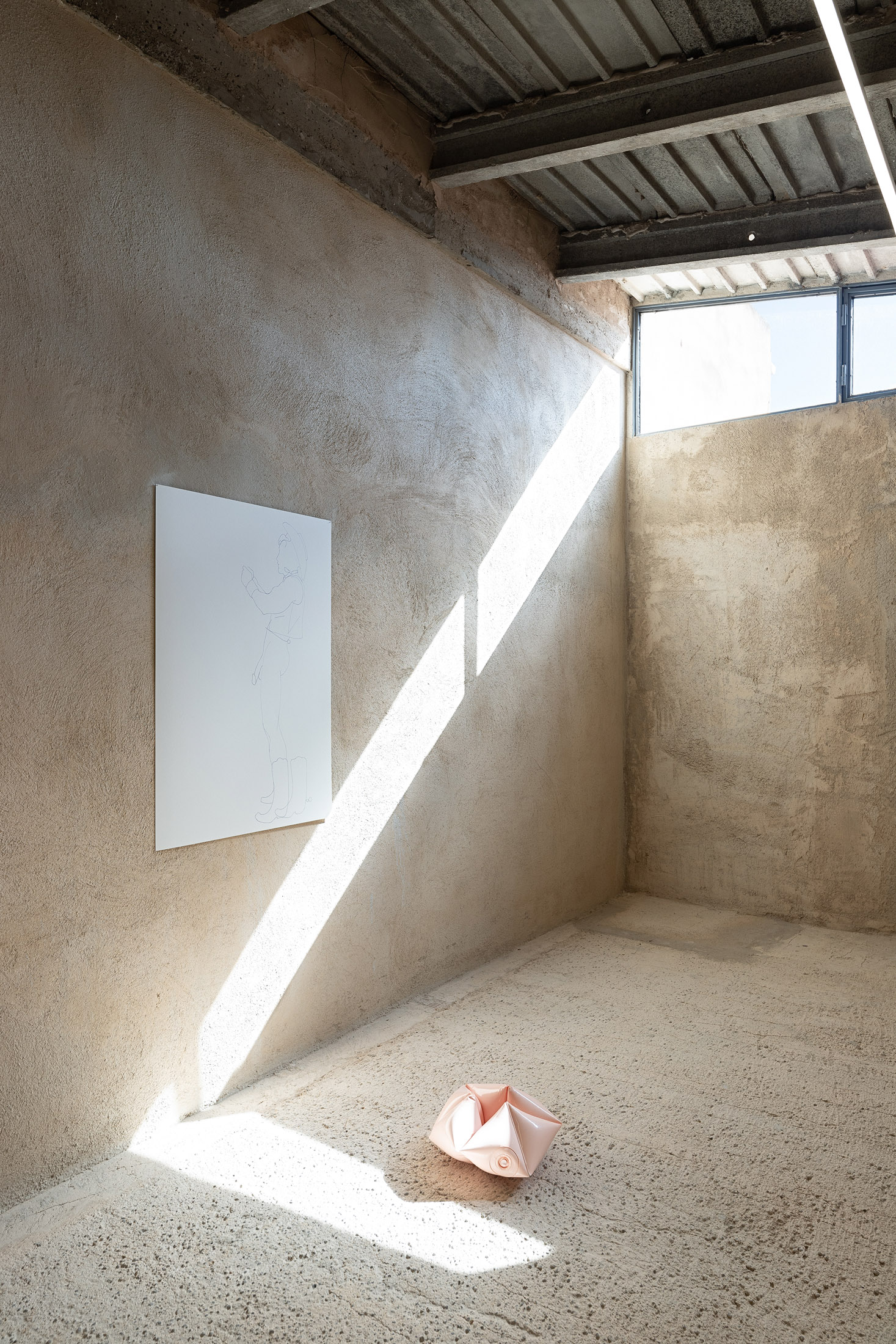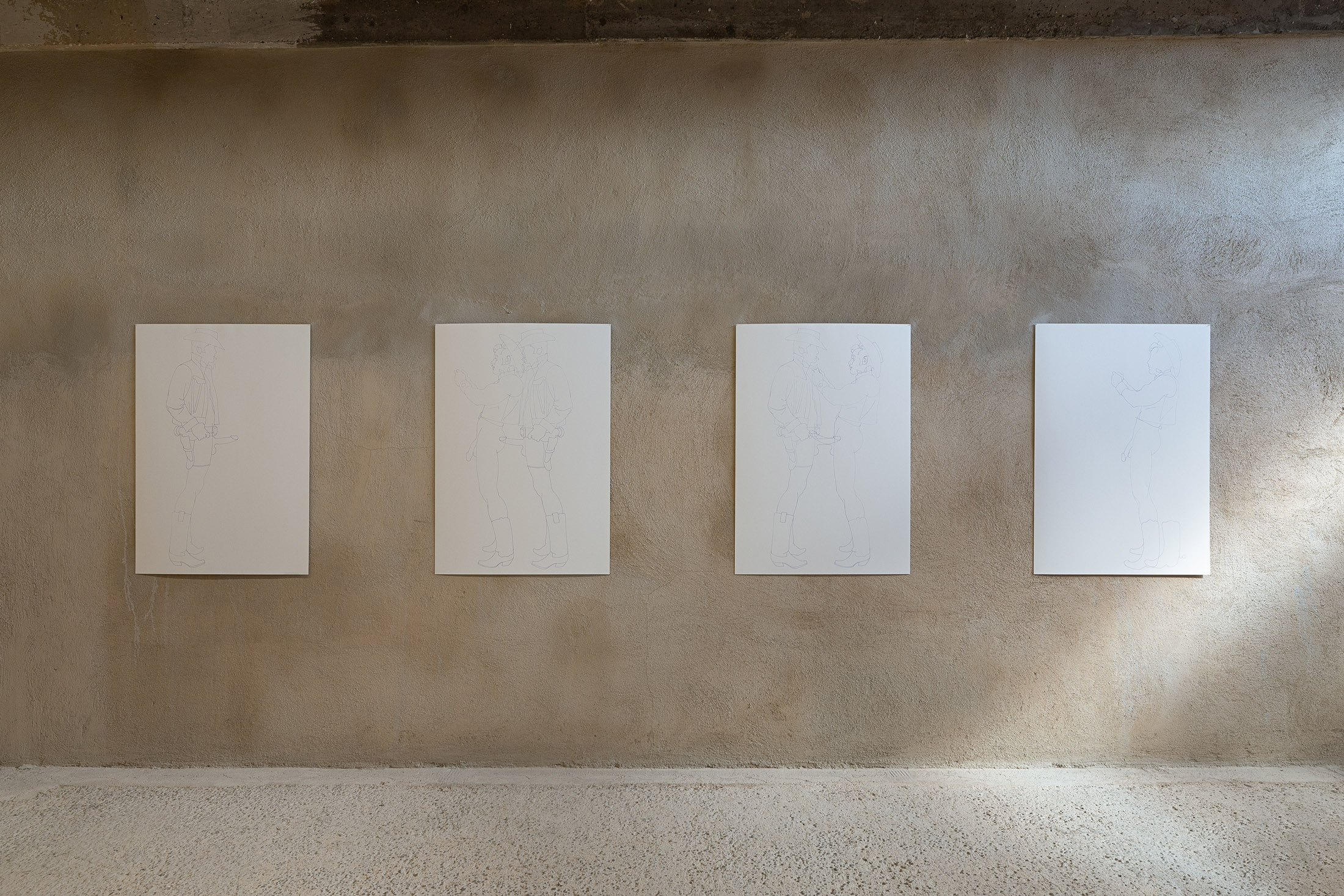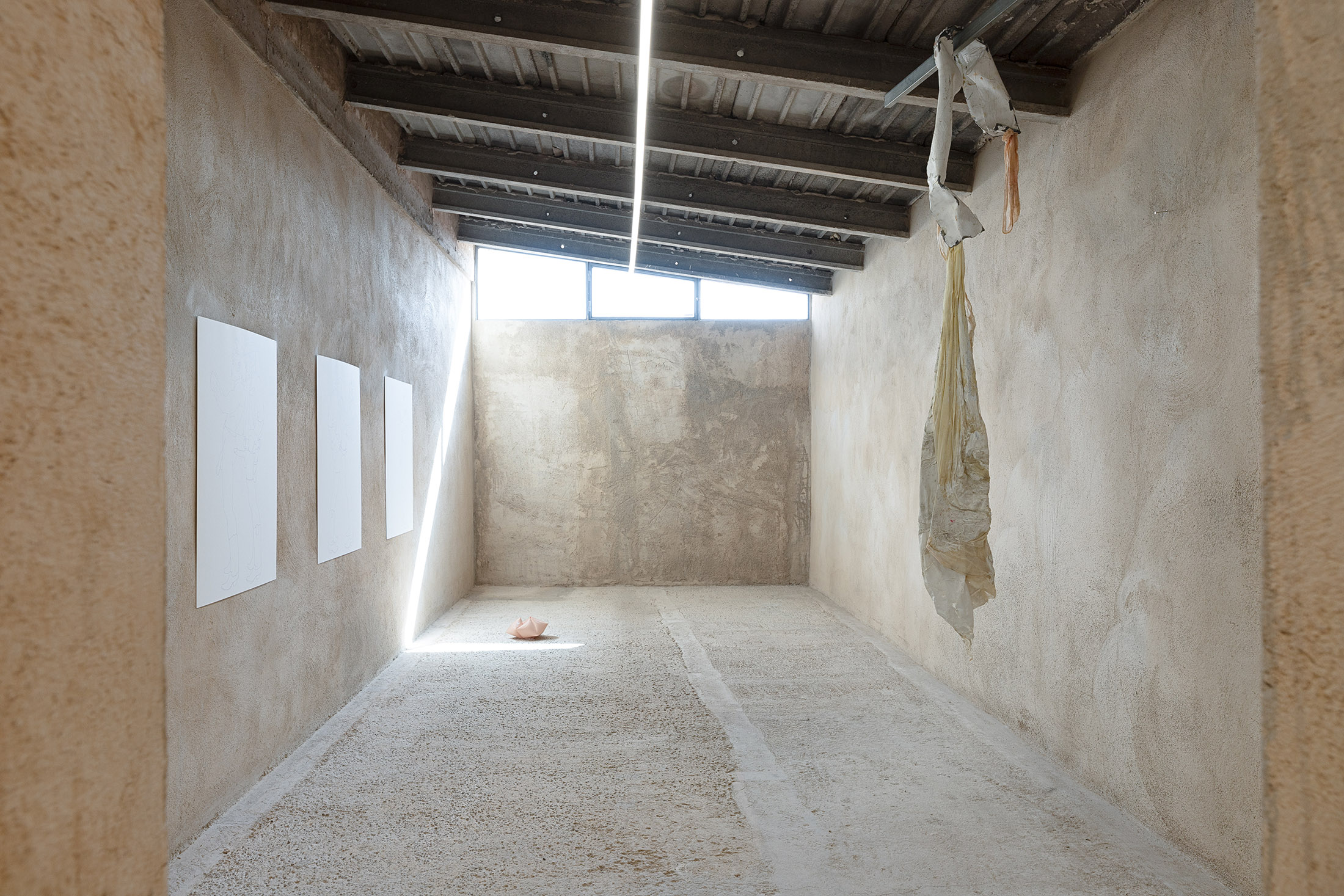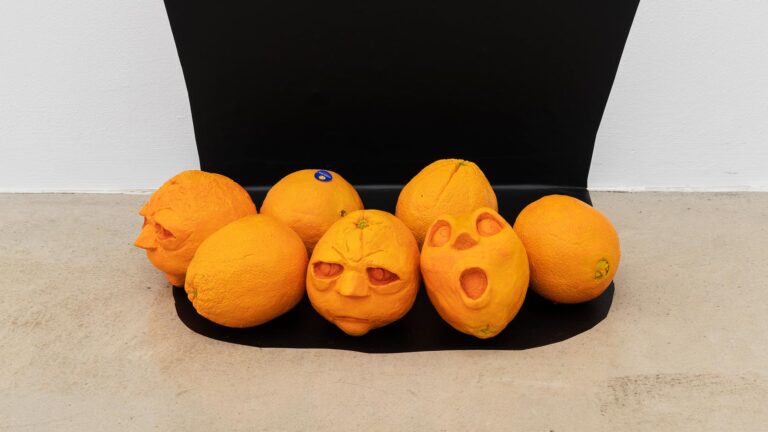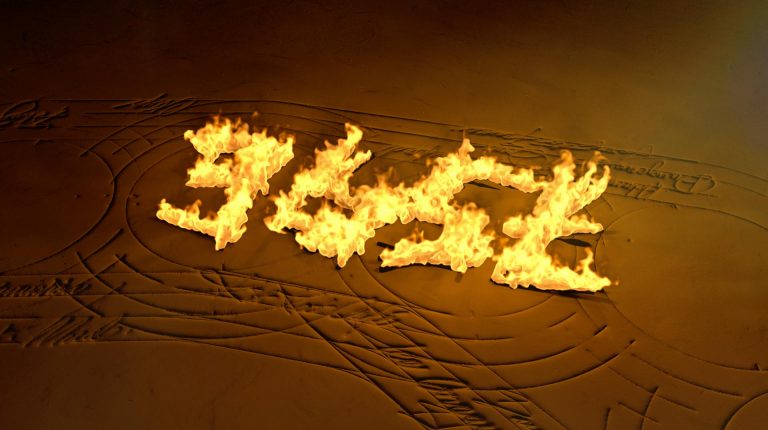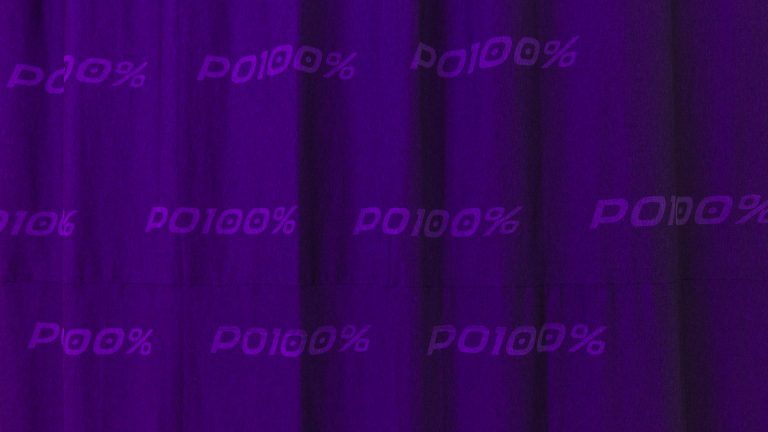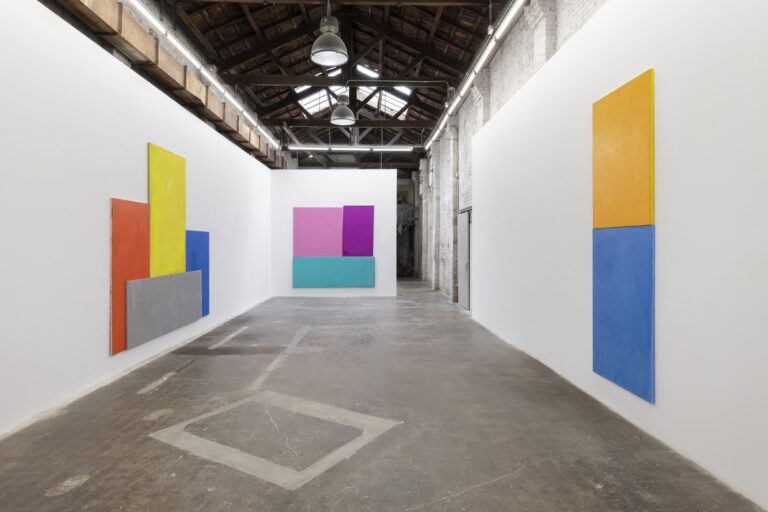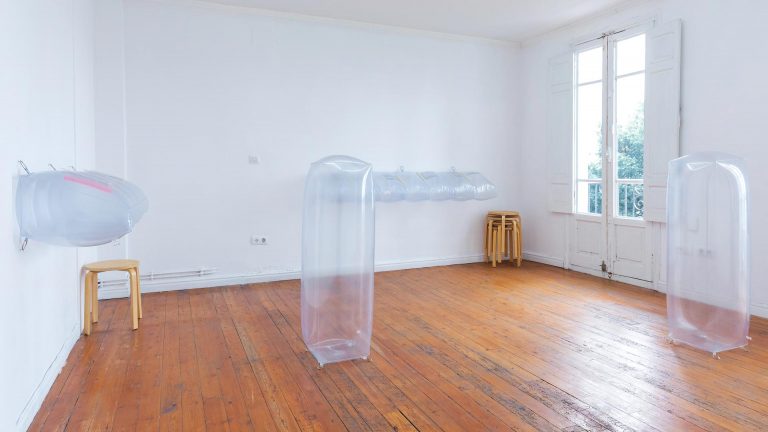Artists: Stephan Dybus, Susan Carr, Daniel Ferstl, Sergio Prego, Mai Blanco, Juliana Cerqueira, Francesc Ruiz, Eulàlia Rovira, Violeta Mayoral, Jessica Stockholder, Lydia Gifford, Yirui Jia, Nora Aurrekoetxea, Luz Broto, Madeline Jimenez Santil, Lara Fluxà
Exhibition title: Tuercas. Una historia de ciencia ficción recluida en giros
Venue: L21 Gallery, Mallorca, Spain
Date: October 20, 2023 – January 12, 2024
Photography: Juan David Cortés / all images copyright and courtesy of the artist and L21 Gallery, Mallorca
When Dr. Victor Frankenstein finally succeeded in bringing his creature to life after a long research, he was overcome by a mixture of amazement and horror: how to deal with the inert matter that comes to life, with that which lies between the natural and the artificial, between the organic and the machine? Unable to resolve this question, his fate would be tied to that of the being he had created, even if it meant a tragic outcome for both of them.
During the planning and installation of this exhibition, L21 Home has also become a kind of laboratory, giving birth to narratives and fictions, aesthetic juxtapositions, conceptual shifts… after multiple experiments, the result has been the group show “Tuercas: Una historia de ciencia ficción recluida en giros” which brings together the work of national and international artists such as Lara Fluxà, Stephan Dybus, Susan Carr, Daniel Ferstl, Sergio Prego, Mai Blanco, Juliana Cerqueira Leite, Francesc Ruiz, Eulàlia Rovira, Violeta Mayoral, Jessica Stockholder, Lydia Gifford, Yirui Jia, Nora Aurrekoetxea, Luz Broto and Madeline Jiménez Santil. How can we approach this creature born from collective energy and work? Perhaps by looking at its multiple fragments?
Halfway between the organic and the machine, Lara Fluxà’s sculptures spread across the gallery floor. The liquid soap is trapped in delicate glass capsules, which seek each other out like communicating vessels. They form a circulatory mechanism that seems to breathe like a living body. Fluids connect with each other in complex systems, as in Sergio Prego’s sexual drawings or in Madeline Jiménez Santil’s sculpture, “Antenas articulables que danzan con el vértigo” (Articulable antennas that dance with vertigo) where cables intertwine with a metal structure to form an ascending pentagram of parallel lines and curves. By contrast, Luz Broto stretches a line between two parallel interiors by means of a long nylon cable, which runs out of a window and into another. This line finds a symbolic continuity in the series of drawings by Eulàlia Rovira, whose delicate branches bring us back to the relationship with nature in a kind of botanical taxidermy on paper. Fluids and glass, flesh and metal, cables and branches meet in the exhibition room in alternating cycles. These combinations invite us to navigate the organic and the inorganic without making too many distinctions between the two realities, thus weaving a network that, as French philosopher Bruno Latour imagined, also includes nonhuman actors. A collective machine capable of agency and aesthetic gestures.
Ranging from the most humane, the emotional expression in the wide-open eyes of Mai Blanco’s characters, to the body that goes beyond flesh to meet the machine and Promethean fiction. In Francesc Ruiz’s series, anthropomorphic figures pose against an intense yellow background. These are bodies made of circular, perfect, improbable forms… Our attempts at fiction are always locked in a twist: that of our own capacity for speculation, the human limit to imagine alternative realities. As a result, the living machine we have built has life and breathes, but it also stumbles over its own limitations and struggles to stand upright. In this sense, Stephan Dybus’ work depicts the struggles of life in a humorous way. His small characters collapse in the video “Natural Shading”, unable to keep their balance in the context of an art gallery. One by one, they crumble slowly as if they were made of plasticine. One of Violeta Mayoral’s photographs shows us the crack of a car windshield, as if we could recreate the crash, while the arm of a skeleton emerges without warning from the energetic brushstrokes of Yirui Yia’s painting “Shadow Player”. The big-eyed creatures in Susan Carr’s paintings never look back at us, but instead elaborate metaphors for loss, eternity and transcendence.
Daniel Ferstl works in different media such as painting, textiles and written word. His work “Mum Knows Best” contains a statement against a background of childish flowers. A dried flower rests delicately on the cork fragments that make up Nora Aurrekoetxea’s installation “Falling Upwards”, an attempt to subvert the laws of gravity? In the exhibition one can find impossible balances and material explorations. For example, the impastos on Lydia Gifford’s abstract paintings remind us that the paint itself and the canvas are the starting point for all pictorial research. While Juliana Cerqueira Leite’s and Jessica Stockholder’s sculptures rise in the oneness of white or from heterogeneous fragments, assembling various objects in vibrant colours.
However, everything that spins must stop at some point. Movement ceases. Circulation shuts down. Breathing runs out. Networks are torn apart. Balances collapse. Branches snap. Cables peel. Flowers dry up. Creatures die and stories, even science fiction ones – those that contradict the laws of logic and push the limits of what is possible, also come to an end.
-Esmeralda Gómez Galera



